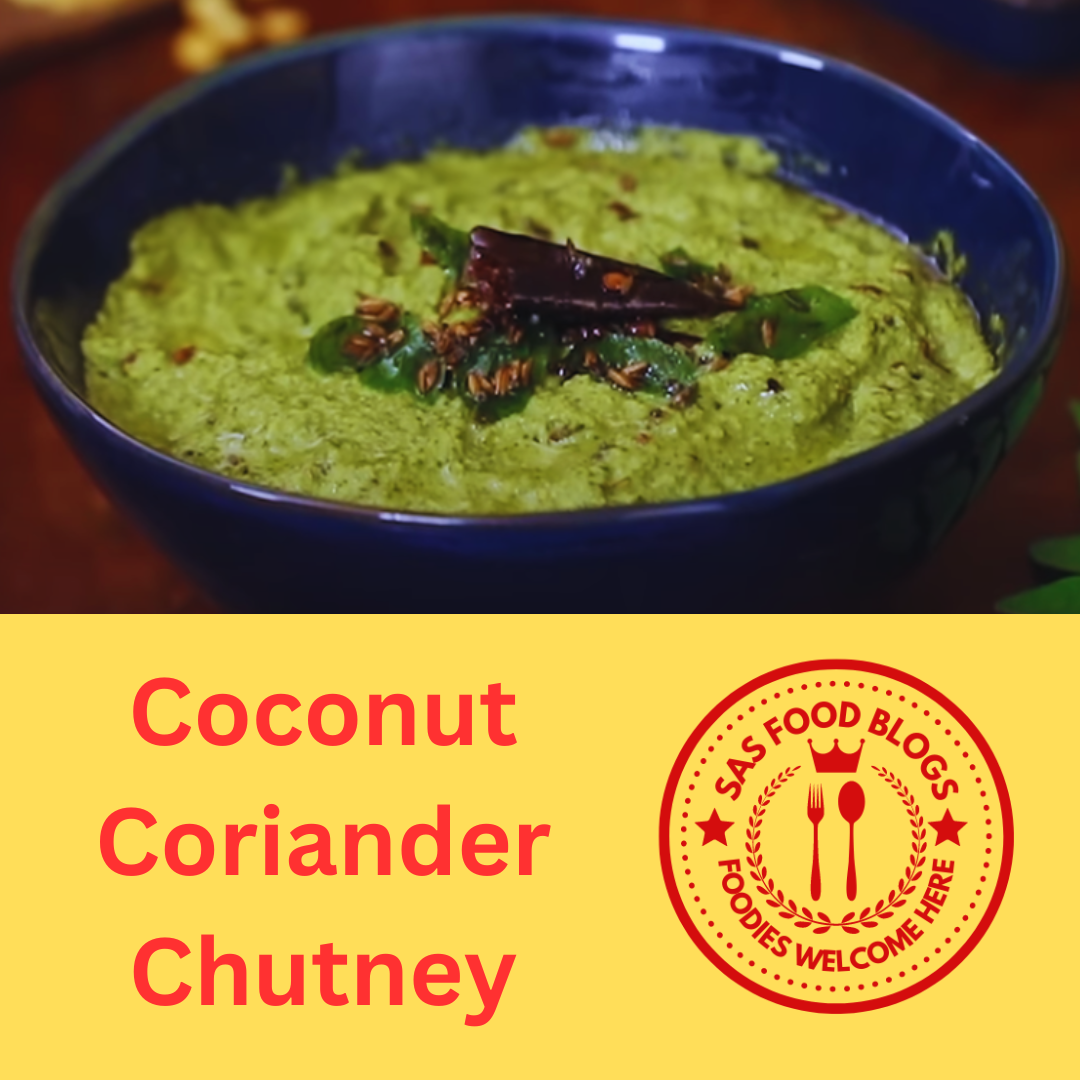How to make Coconut Coriander Chutney?
Hello Friends welcome to SAS FOOD BLOGS, Today we are going to see how to make Coconut Coriander Chutney.
Coconut coriander chutney is a popular South Indian condiment that pairs well with various dishes such as dosa, idli, vada, and other snacks. It’s a flavorful and versatile chutney that adds a refreshing and tangy taste to your meals. Here’s a simple recipe for coconut coriander chutney:
INGREDIENTS:
- 1 cup fresh grated coconut
- 1/2 cup fresh coriander leaves, chopped
- Green chilli – 1 No
- 1-inch piece of ginger, peeled
- 2 tablespoons roasted chana dal
- Tamarind paste – 1 tablespoon
- Salt to taste
- Water, as needed
- For tempering:
- 1 tablespoon oil
- 1/2 teaspoon mustard seeds
- 1/2 teaspoon urad dal
- A few curry leaves
Preparation Method
Today’s recipe is delicious and taste recipe that is Coconut Coriander Chutney and so let’s gets started.
Step 1 (Coconut Coriander Chutney)
In a blender, combine grated coconut, chopped coriander leaves, green chilli, ginger, roasted chana dal, tamarind paste, and salt.
Blend:
Blend the ingredients until you get a smooth paste by adding water as per your need to get the required consistency.
Prepare the Tempering:
Heat oil in a small pan. And then add 1/2 teaspoon of mustard seeds and add urad dal and curry leaves. Sauté until the dal turns golden brown.
Temper the Chutney:
Pour the tempering over the blended coconut-coriander mixture and mix well.
Step 2 (Coconut Coriander Chutney)
Serve:
Transfer the chutney to a serving bowl.
Enjoy:
Serve coconut coriander chutney with dosa, idli, vada, or any other South Indian snack.
Coconut Coriander Chutney is ready to serve, so you can try this recipe in your home and enjoy it and share the recipe with your family and friends.
Benefits of Coconut Coriander Chutney:
Coconut coriander chutney not only adds flavour to your meals but also offers several health benefits due to its nutritious ingredients. Here are some potential benefits:
Step 3 (Coconut Coriander Chutney)
Rich in Nutrients:
Coconut provides healthy fats, fiber, vitamins (such as C, E, and B vitamins), and minerals (including iron, potassium, and magnesium).
Coriander leaves are a good source of antioxidants, vitamins A and K, and dietary fiber.
Aids Digestion:
The combination of coconut and coriander may aid digestion. Coconut contains fiber, which promotes digestive health, and coriander has been traditionally used to ease indigestion.
Anti-Inflammatory Properties:
Chronic inflammation is linked to various health issues, so including anti-inflammatory foods can be beneficial.
Boosts Immunity:
Coconut and coriander are rich in antioxidants and vitamins that support the immune system. Antioxidants help combat free radicals and strengthen the body’s defences against infections.
Healthy Fats:
Coconut contains medium-chain triglycerides (MCTs), which are considered healthy fats. These fats are easily digestible and can be a quick source of energy.
Step 4 (Coconut Coriander Chutney)
May Help Regulate Blood Sugar:
Some studies suggest that coconut and coriander may have properties that help regulate blood sugar levels. However, it’s essential to consume them as part of a balanced diet.
Tamarind Benefits:
Tamarind, often included in this chutney, adds a tangy flavour and may offer digestive benefits. It contains compounds that may help with constipation and other digestive issues.
Low in Calories:
Coconut coriander chutney is relatively low in calories, making it a flavourful and healthy addition to meals without adding excessive calorie intake.
Vegan and Gluten-Free:
This chutney is suitable for individuals following vegan and gluten-free diets, providing a versatile condiment for a variety of dietary preferences.
While these potential benefits are associated with the individual ingredients in the chutney, it’s important to remember that a well-rounded and balanced diet is key to overall health.
